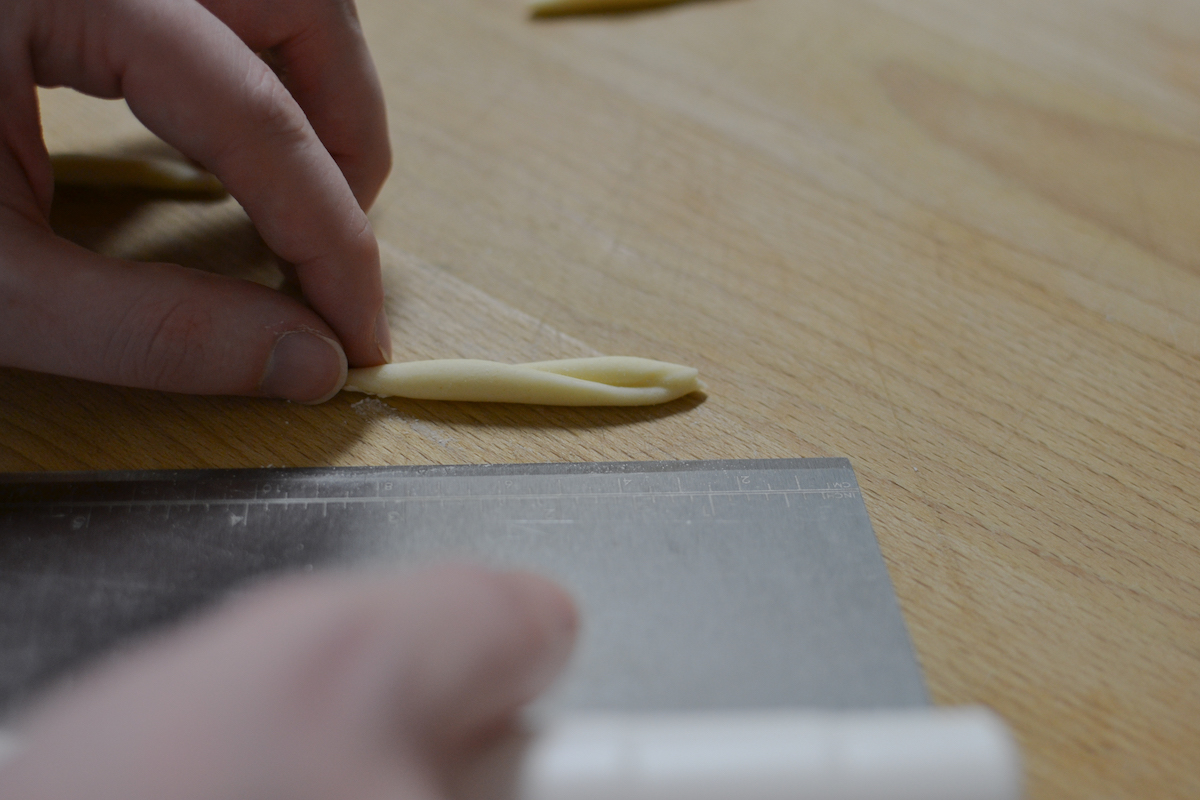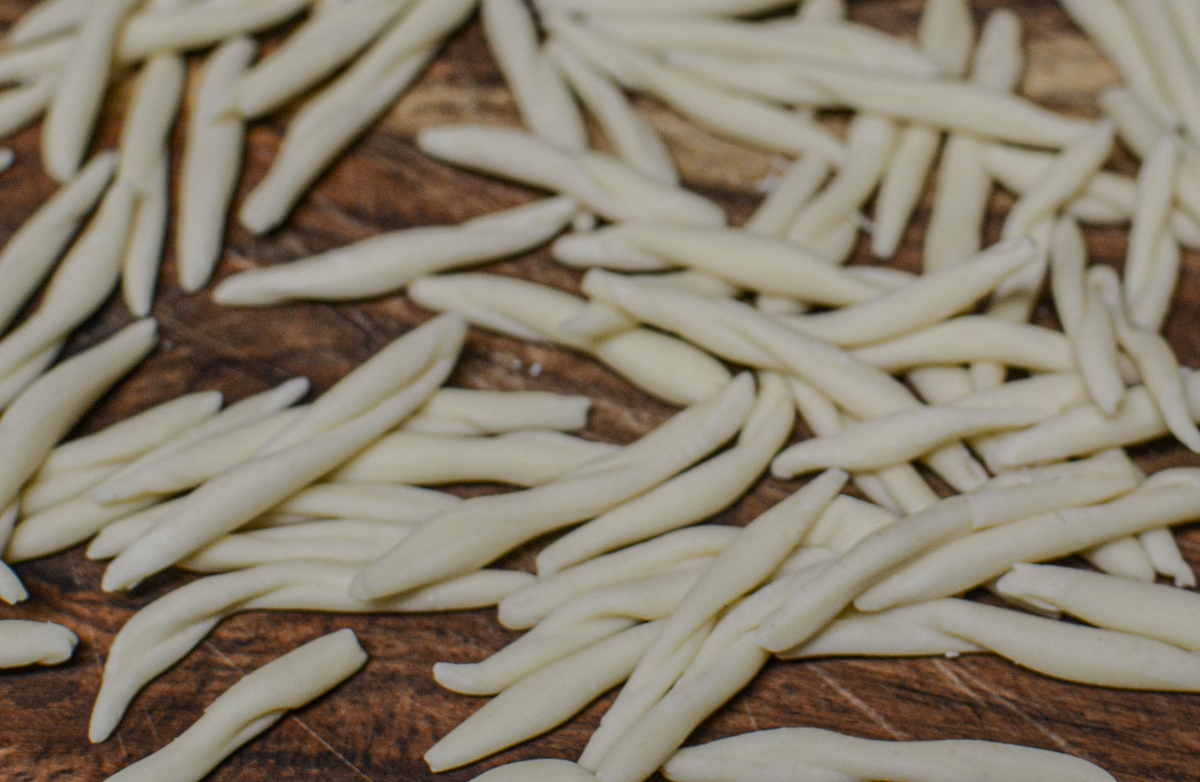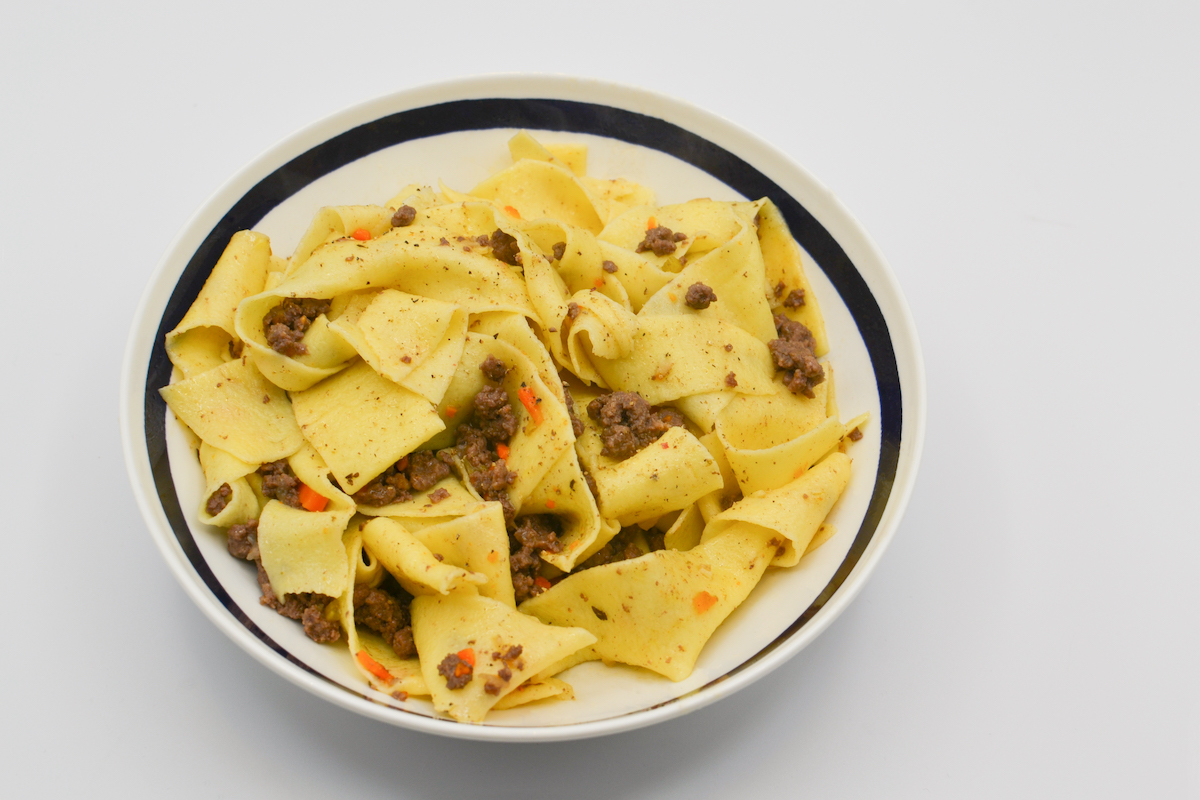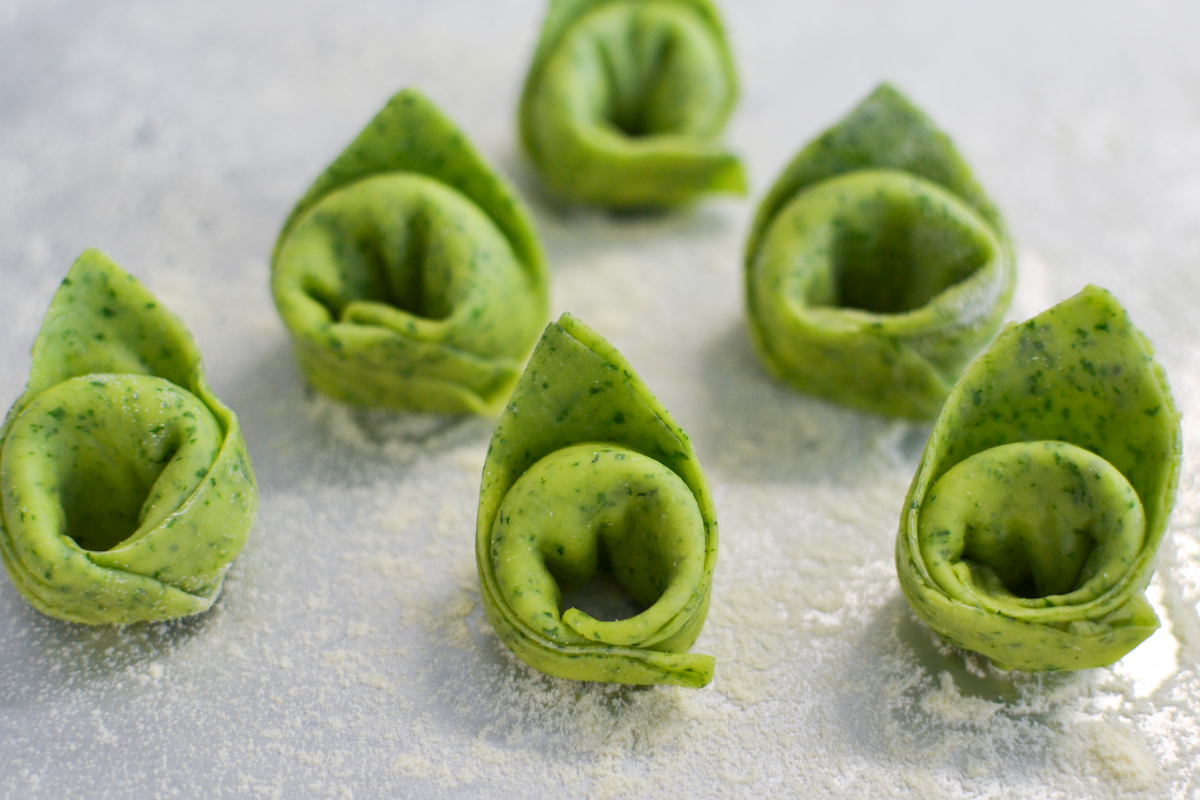Description: Trofie is a short twisted pasta shape that has some bite to it. The dough can have the addition of potato to lighten up the dough and make it more filling. However, this version will be the classic kind you find in the store and use a semolina dough.
Dough: Semolina Dough
Region: Liguria
Traditional Sauce: Basil Pesto
For portioning I do 100g of flour per person.

Homemade Trofie
Description
Homemade trofie with semolina flour and water
Ingredients
Instructions
-
Prepare the pasta dough
Weigh out your flour and water, making sure the water is very warm. I aim for around 90-100 degrees F. Mix together in a bowl into a shaggy dough starts to form.
See link in the description for more details on making the dough. -
Knead the dough
Dump on a counter or wooden board and knead for 10 minutes. The dough should be very elastic and spring back when touched and almost feel like playdough (see notes below). Cover and let rest for 30 minutes.
-
Roll out the dough
Divide the dough into 4 equal parts. While working with one piece at a time keep the rest covered with a damp kitchen towel to avoid the dough from drying out.
Roll the dough into a snake around 1/2" diameter. With a bench scraper or knife, cut the dough into 1/2" pieces.
-
Shaping the trofie
Roll out each piece with the palm of your hand until the trofie is 2-2.5" in length. You want to get the ends a bit thinner. Using the bench scraper or knife place the edge slightly into the dough and gently roll.
It is best to shape the dough on a wood surface such as a cutting board. The wood allows just the right amount of friction. The dough would just slide across a marble counter.
See the gallery for detailed pictures on shaping the pasta. -
Drying and Cooking
You can either cook the trofie fresh or dry it.
Fresh: Cook the trofie for just a couple minutes in heavily salted boiling water.
Dried: Let try completely for several hours or overnight. Depending on the humidity it may take upto a full day or more. Cook for 12-15 minutes in in heavily salted boiling water. Due to their shape and density they take much longer to cook dried. They should be al-dente but not hard in the middle.









